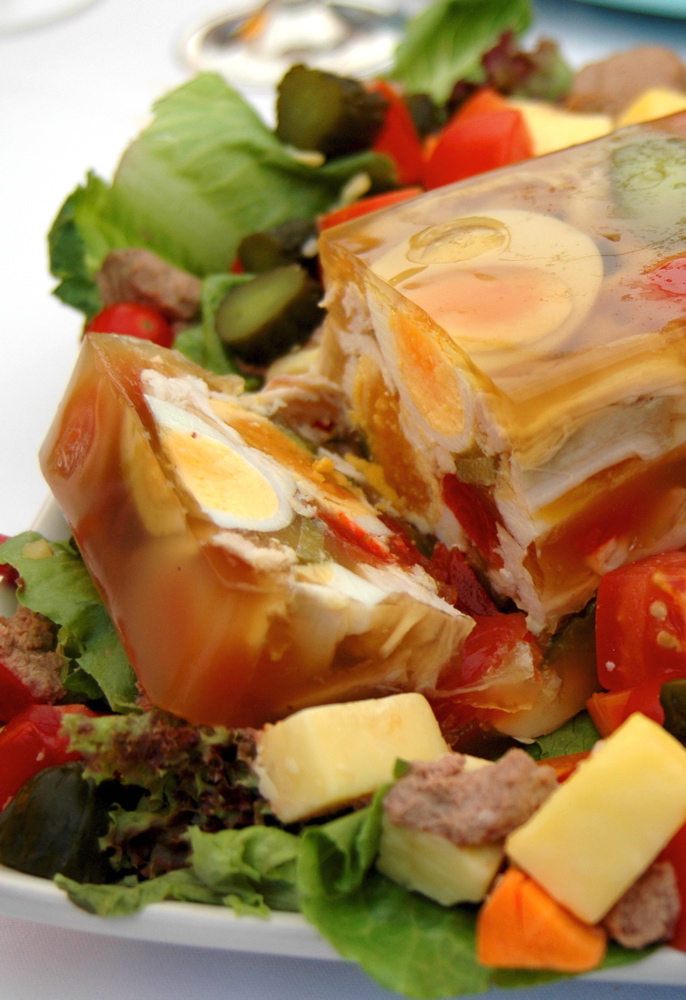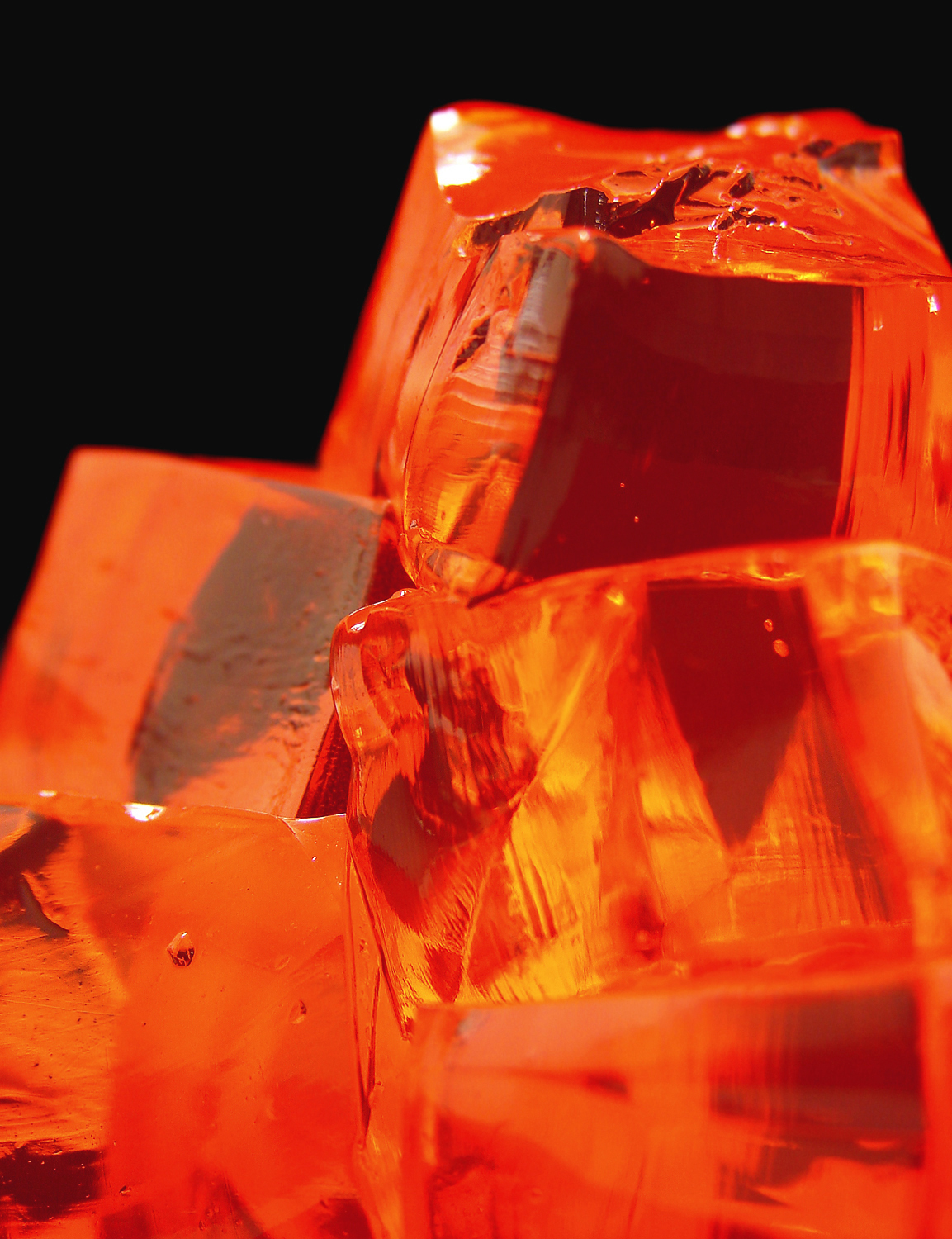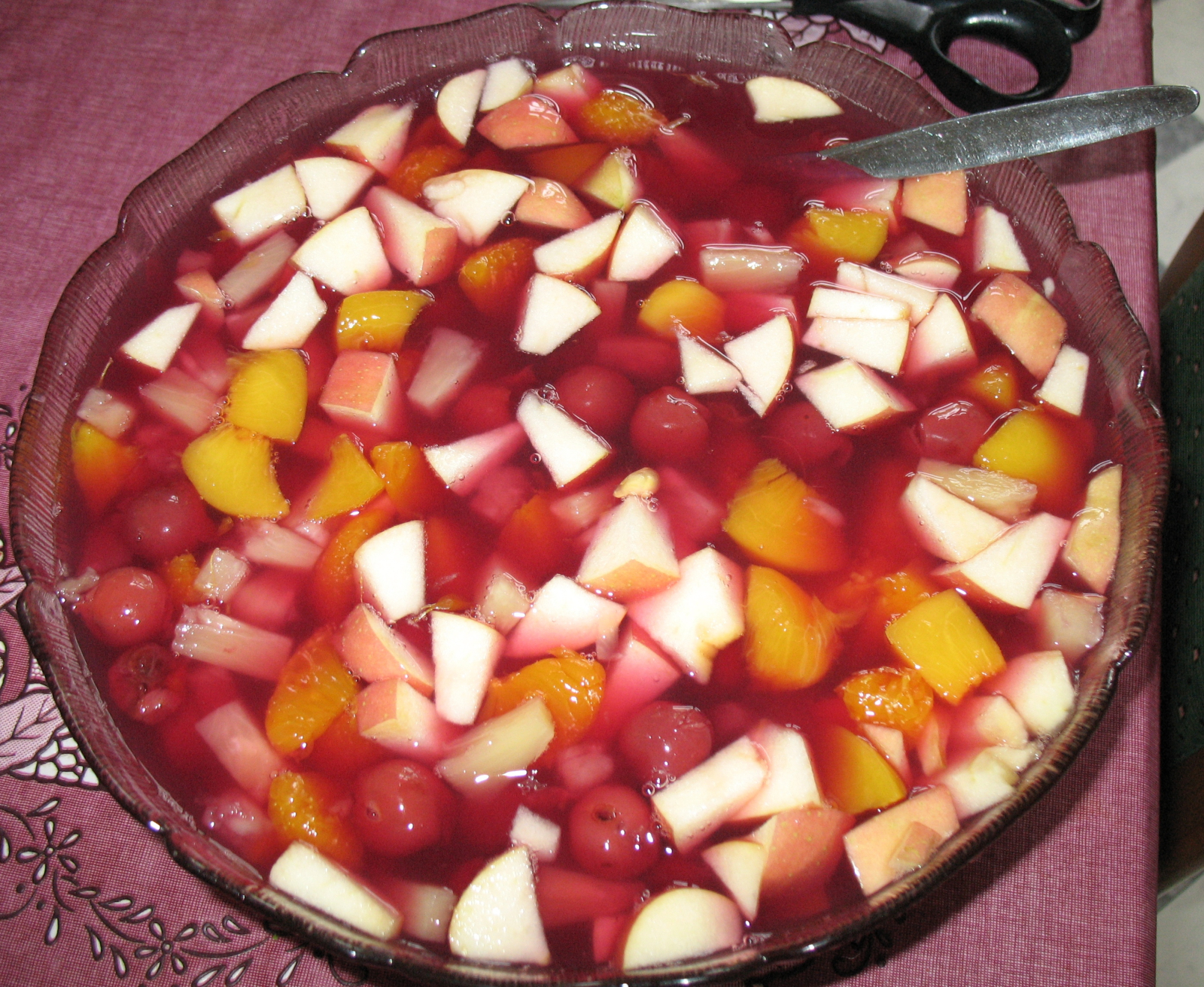Gelatin and Jell-o
by Andy Boyd
Today, America's most famous dessert. The University of Houston presents this series about the machines that make our civilization run, and the people whose ingenuity created them.
If you've ever boiled meat bones to make stock, you know that what you find in the refrigerator the next morning looks like a giant bowl of jello. That's because it is. Bones, tendons, cartilage, and other connective tissues are largely made up of a protein called collagen which, when boiled, produces gelatin.
Gelatin-based recipes date to at least the early fourteen-hundreds. Not surprisingly, since it's derived from animals, these early recipes tended to involve cold meat. In the eighteen-hundreds, French chef Antonin Carême used gelatin to make beautifully molded aspics famous, thus creating demand for pre-prepared, dried gelatin. As it turns out, gelatin is also a prime ingredient in the making of common glues, as we learn from the tale of old horses being sent to the glue factory. In 1845 New York industrialist, inventor, and glue manufacturer Peter Cooper submitted a patent for what appears to be the first sweetened gelatin dessert mix.

It's an aspic with chicken and eggs. Photo Credit: Wikimedia Commons.
But it wasn't until fifty years later that another New Yorker, Mr. Pearle Wait, would find the key ingredient allowing the market for gelatin desserts to take shape. In addition to sugar and flavorings, Wait added food coloring. His wife, May, came up with the name Jell-O, which the couple trademarked.
Sales got off to a slow start, and within two years the couple sold their business for $450 to Orator Woodward, an aspiring businessman who owned rights to a coffee substitute called Grain-O. It would mark the beginning of one of the great marketing efforts in U.S. history.
Woodward took out an ad for Jell-O in the Ladies Home Journal, calling it "America's most famous dessert" at a time when most people had never heard of it. An aggressive salesforce hounded retailers. Recipe books were distributed; dessert molds handed out. Norman Rockwell was enlisted for magazine sketches. Jell-O sponsored one of history's most successful radio programs while introducing listeners to the Jell-O jingle.
[Video: J-E-L-L-O. "The Jell-O program starring Jack Benny"]
Years later, in 1974, a thirty-seven-year-old Bill Cosby would reinvigorate sagging sales by making commercials for "jello-jigglers" -- fun-shaped finger food. Cosby, whose clowning with the wobbly product proved perfect for audiences, would continue as a company spokesman for almost three decades.
Jell-O has carved a place in the American ethos, colorful, bright, and, Jell-O shots and Jell-O wrestling notwithstanding, wholesome. But the once iconic Jell-O fruit mold seems to have lost its luster. By itself, gelatin is natural, benign, and tasteless. With sugar and food coloring it doesn't cry out to the health-conscious consumer. But one thing's for sure. Jell-O is fun, a wiggly wonder for kids of all ages.
A fruit salad. Photo Credit: Wikimedia Commons.

A stack of jello cubes. Photo Credit: Wikimedia Commons.
I'm Andy Boyd at the University of Houston, where we're interested in the way inventive minds work.
(Theme music)
For a related episode, see PETER COOPER.
N. Barksdale. Jiggle It: The History of Gelatins, Aspics and Jellies. From the History Channel website.
M. Buzz. The Fascinating, Untold Story of Jell-O. From the Gizmodo website: http://gizmodo.com/the-fascinating-untold-history-of-jell-o-1508125288. Accessed July 27, 2016.
The Jack Benny Program. From the Wikipedia website: https://en.wikipedia.org/wiki/The_Jack_Benny_Program. Accessed July 27, 2016.
Jell-O. From the Wikipedia website: https://en.wikipedia.org/wiki/Jell-O. Accessed July 27, 2016.
Jell-O: America's Most Famous Dessert: At Home Everywhere. From the University of Michigan libraries website: http://www.lib.umich.edu/online-exhibits/exhibits/show/jell-o. Accessed July 27, 2016
F. Wickman. Bonding With Horses: Why Are Horses Good For Making Glue? From the Slate website: http://www.slate.com/articles/life/explainer/2012/02/what_do_horses_have_to_do_with_glue_.html. Accessed July 27, 2016.
This episode was first aired on August 4, 2016
